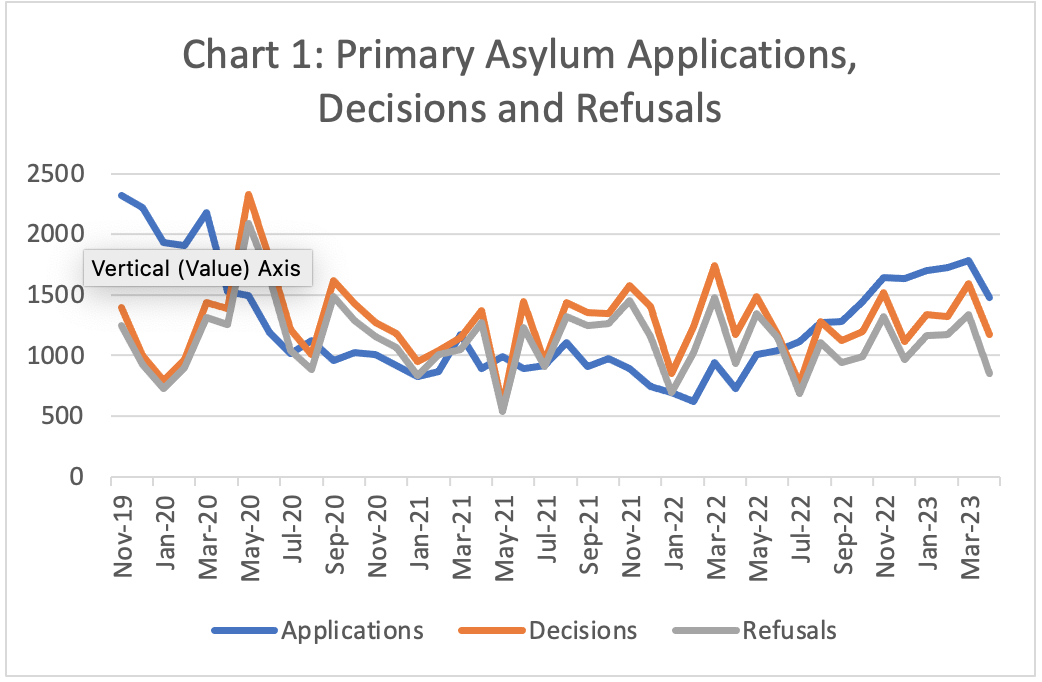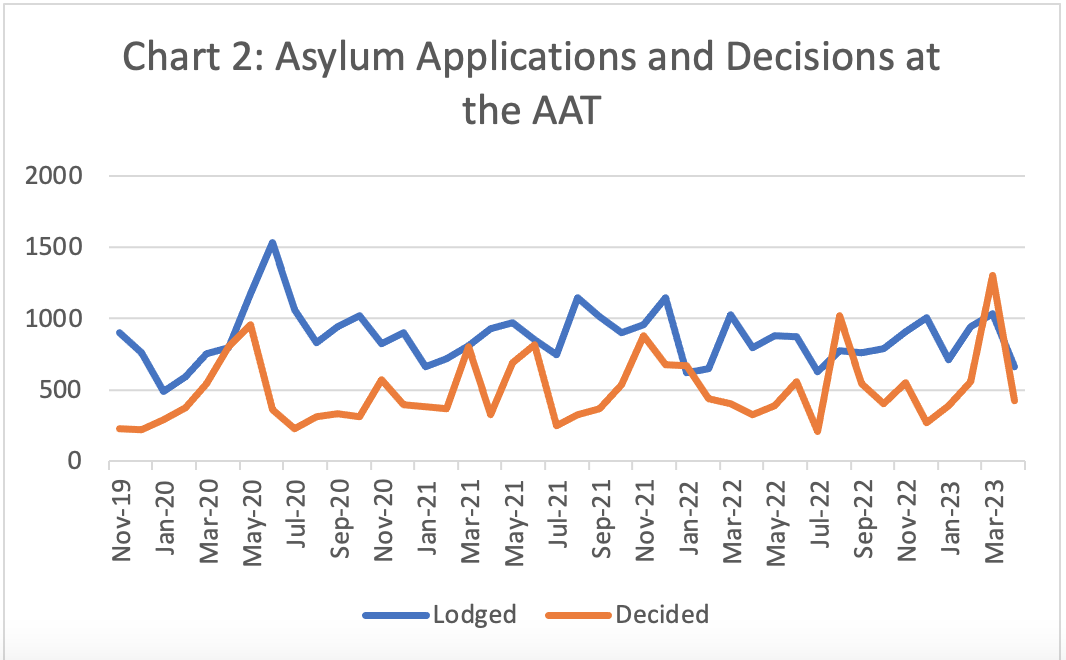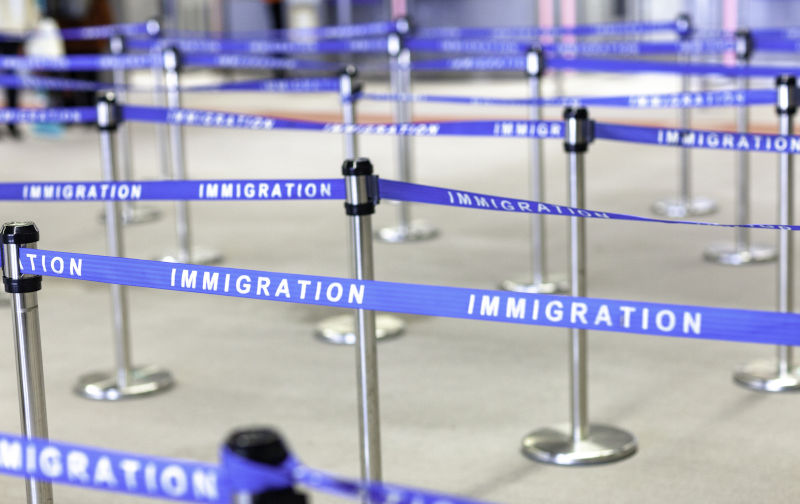Have we turned a corner on growth in asylum applications?
May 31, 2023
Since international borders re-opened, asylum applications at the primary stage steadily grew from a low of around 618 in February 2022 to 1,786 in March 2023. While this was well below the peak in 2017-18 of around 2,500 per month, it would have been worrying the Albanese Government given the entry of the Coalition and Murdoch press into the public debate on asylum numbers.
In April 2023, primary asylum applications fell to 1,475, the lowest since October 2022 (see Chart 1). However, the number of primary decisions also fell to 847, the lowest since July 2022. A key to limiting unmeritorious asylum applications is processing faster than the application rate.

Applications must also be processed quickly at the Administrative Appeals Tribunal (AAT). While applications to the AAT fell in April 2023, the processing rate fell even further (see Chart 2).

While the asylum backlog at the AAT increased in April 2023 to 39,598, the overall number of asylum applicants refused at the primary stage and still in Australia fell marginally to 73,750.
The composition of asylum applications since the peak of the labour trafficking scam abusing the asylum system in 2017-18 has shifted significantly. It is no longer dominated by applicants from Malaysia and China. In 2017-18, over 67 percent of asylum applicants were from just these two nations. In terms of source nations with very high refusal rates, the major source nations in the past 12 months have been:
- India: 2,126 primary applications;
- China: 1,589 primary applications;
- Malaysia: 1,093 primary applications;
- Indonesia: 985 primary applications;
- Vietnam: 939 primary applications.
The major surprise collection of source nations has been the Pacific Islands (particularly Tonga with 767 primary applications and Vanuatu with 651 primary applications) and Timor Leste (543) which have overall contributed over 3,200 primary asylum applications over the past 12 months. This is linked to the Pacific Australia Labour Mobility (PALM) Scheme. The approval rate for these asylum applications is negligible.
The major source nations with high approval rates include Pakistan, Iran, Myanmar, Ukraine, Afghanistan, Iraq, Ethiopia, Libya, Nigeria and Sri Lanka. Given political circumstances in these nations, high asylum approval rates are not surprising.
In an attempt to reduce the number unmeritorious asylum applications, the Albanese Government appears to be taking the following steps that include funding in the recent Budget for:
- faster asylum processing at both the primary and AAT stages;
- a stronger fit and proper person test for migration agents;
- additional airport liaison officers at key overseas airports;
- ramping up immigration compliance activities after these fell to historically low levels under the Coalition Government; and
- introduction of the Pacific Engagement Visa which provides a lottery-based pathway to permanent residence for Pacific Island nationals.
Only time will tell if these measures will be effective in reducing unmeritorious asylum applications.
But few of these measures are likely to have much impact on the unprecedented number of unsuccessful asylum seekers currently living in the shadows in Australia. If the labour market weakens as forecast by Treasury, these unsuccessful asylum seekers will be amongst the most vulnerable people in Australia. Most will be unable to leave Australia and will be at the mercy of unscrupulous traffickers, labour hire companies and employers.

